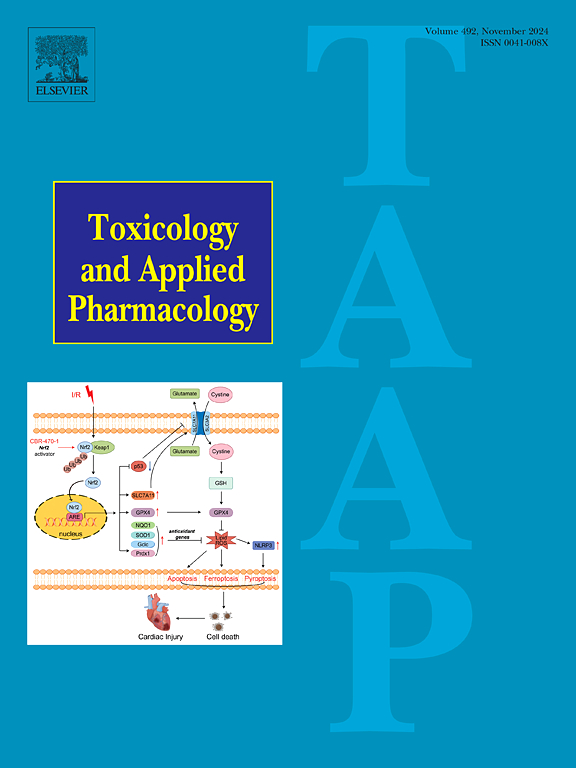Polycyclic aromatic hydrocarbon-aryl hydrocarbon receptor signaling regulates chronic inflammation in lung-gut axis
IF 3.3
3区 医学
Q2 PHARMACOLOGY & PHARMACY
引用次数: 0
Abstract
Polycyclic aromatic hydrocarbons (PAHs) are broadly identified in environmental pollutants and also formed during the heat processing of meat, including grilling, roasting, smoking, and frying, particularly at high temperatures. Besides, the PAHs influence inflammatory response through activation of aryl hydrocarbon receptor (AhR) signaling. Recently, the role of the PAHs/AhR axis in inflammatory diseases has attracted major attention in the regulation of lung function, gut barrier function, and systemic inflammation. Many experiments have been conducted to determine the role of the PAHs/AhR/cytochrome P450 1A1 signaling activation on elevation of inflammation in the lung–gut axis. In contrast, several dietary AhR ligands can improve inflammatory function by modulating the AhR signaling, thereby strengthening the intestinal barrier. This review includes the pivotal roles of xenobiotic and diet-derived AhR ligands in the regulation of chronic lung diseases and systemic inflammation and their relevance in the lung–gut axis.
多环芳烃-芳烃受体信号通路调控肺肠轴慢性炎症
多环芳烃(PAHs)广泛存在于环境污染物中,也在肉类的加热加工过程中形成,包括烧烤、烘烤、烟熏和油炸,特别是在高温下。此外,多环芳烃通过激活芳烃受体(aryl hydrocarbon receptor, AhR)信号通路影响炎症反应。近年来,PAHs/AhR轴在炎症性疾病中的作用在肺功能、肠道屏障功能和全身性炎症的调节中引起了人们的关注。已经进行了许多实验来确定多环芳烃/AhR/细胞色素P450 1A1信号激活在肺肠轴炎症升高中的作用。相反,一些膳食AhR配体可以通过调节AhR信号来改善炎症功能,从而增强肠道屏障。本文综述了外源和饮食来源的AhR配体在慢性肺部疾病和全身性炎症的调节中的关键作用及其在肺-肠轴中的相关性。
本文章由计算机程序翻译,如有差异,请以英文原文为准。
求助全文
约1分钟内获得全文
求助全文
来源期刊
CiteScore
6.80
自引率
2.60%
发文量
309
审稿时长
32 days
期刊介绍:
Toxicology and Applied Pharmacology publishes original scientific research of relevance to animals or humans pertaining to the action of chemicals, drugs, or chemically-defined natural products.
Regular articles address mechanistic approaches to physiological, pharmacologic, biochemical, cellular, or molecular understanding of toxicologic/pathologic lesions and to methods used to describe these responses. Safety Science articles address outstanding state-of-the-art preclinical and human translational characterization of drug and chemical safety employing cutting-edge science. Highly significant Regulatory Safety Science articles will also be considered in this category. Papers concerned with alternatives to the use of experimental animals are encouraged.
Short articles report on high impact studies of broad interest to readers of TAAP that would benefit from rapid publication. These articles should contain no more than a combined total of four figures and tables. Authors should include in their cover letter the justification for consideration of their manuscript as a short article.

 求助内容:
求助内容: 应助结果提醒方式:
应助结果提醒方式:


